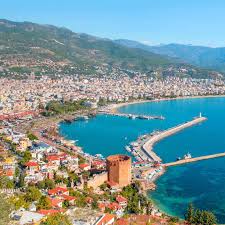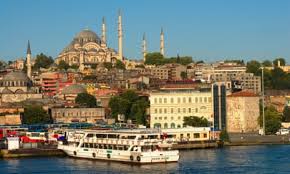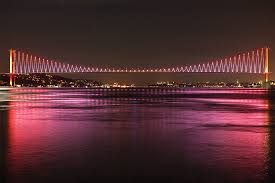Turkey is a transcontinental country located mostly on the Anatolian Peninsula in western Asia, and a smaller part on the Balkan Peninsula in southeastern Europe. Eastern Thrace, the European part of Turkey, is separated from Anatolia by the Sea of Marmara, and the Bosporus and Dardanelles straits. Istanbul, which straddles Europe and Asia, is the largest city in the country, while Ankara is the capital. Turkey is bordered to the northwest by Greece and Bulgaria. to the north the Black Sea; from northeastern Georgia; to the east Armenia, the Azerbaijani borderlands of Nakhchivan and Iran; from the southeast of Iraq; from the south, Syria and the Mediterranean Sea; It overlooks the west on the Aegean Sea. Approximately 70 to 80 percent of the country’s citizens identify themselves as Turkish, while the Kurds are the largest minority, accounting for between 15 and 20 percent of the population.
Turkey has a very diverse culture which is a mixture of various elements of Oghuz, Anatolian and Ottoman (which was itself a continuation of both Greek, Roman and Islamic cultures and Western culture and traditions, which began with the Westernization of the Ottoman and continues today. This mixture originally started as a result of an encounter Of the Turks and their culture with those peoples who were on their way during their migration from Central Asia to the West.
Turkey has also successfully transformed from an Ottoman state based on the Islamic religion into a modern nation-state with a strong separation of religion and state, and an increase in artistic modes of expression. During the early years of the Republic, the government invested a large amount of resources in the fine arts, such as museums, theatres, opera houses, and architecture. Various historical factors have played an important role in determining the identity of modern Turkey. Turkish culture is the product of efforts to make “modern Turkey” a Western country, while preserving traditional religious and historical values.
Turkish music and literature form wonderful examples of the combination of these cultural influences, which were the result of the interaction between the Ottoman Empire and the Islamic world along with Europe, thus contributing to the combination of Turkish, Islamic and European traditions in Turkish music and literary arts in modern times.[203] Just as Turkish literature was influenced by Persian and Arabic literature during the Ottoman era, despite the near end of the Ottoman Empire, especially after the Tanzimat period, the influence of both Turkish and European literary folk is increasingly noticeable in the tradition. It is a mixture of the drama of cultural influences, for example, in the form of “New Symbols of the Collision and Convergence of Civilizations” which was published in the works of the Turkish writer Orhan Pamuk, who won the Nobel Prize for Literature in 2006.[204] According to Kunda researchers of public opinion, 70% of citizens do not read Turkish books.
The architectural elements that were present in Turkey are also testaments to the unique blend of traditions that have influenced the region over the centuries. In addition to the traditional Byzantine elements found in many parts of Turkey and many masterpieces of later Ottoman architecture, with an impressive combination of local and Islamic traditions, it can be found throughout the country, as well as in surviving monuments from the Ottoman era. Sinan Agha is considered the greatest architect of the classical period in Ottoman architecture. Since the 18th century, Turkish architecture has been increasingly influenced by Western styles, and this can be seen particularly in Istanbul where Dolmabahçe Ciragan buildings and palaces sit side by side with many modern skyscrapers, all representing different traditions.
Turkey enjoys an important location between the continents of Asia and Europe, which gives great importance to the transportation sector from the economic point of view. The bandits, for example, introduced the state to a total of about $1.4 billion (1999) in fees and taxes applied to the use of roads, especially international ones. Road traffic is concentrated on roads, while railways are used for certain distances, usually for the transportation of goods. The percentage of government investment in the transportation and communications sector is 27.3% of the percentage of general government investment, which indicates the importance of this sector, and it is the same as 14% of the state’s gross national product, according to 2000 statistics.
The total number of land roads is 413,724 km, of which 1,800 km are highways, 62,000 km are normal roads, and 350,000 km are so-called village roads. The most important land routes are those connecting Istanbul to Ankara , the Gaziantep-Adana road , the coastal roads connecting Izmir to the southern coastal cities and the Izmir-Manisa road. In 2000, 89.2% of all freight traffic was carried on roads. Buses are used to transport passengers between cities for medium and long distances.




